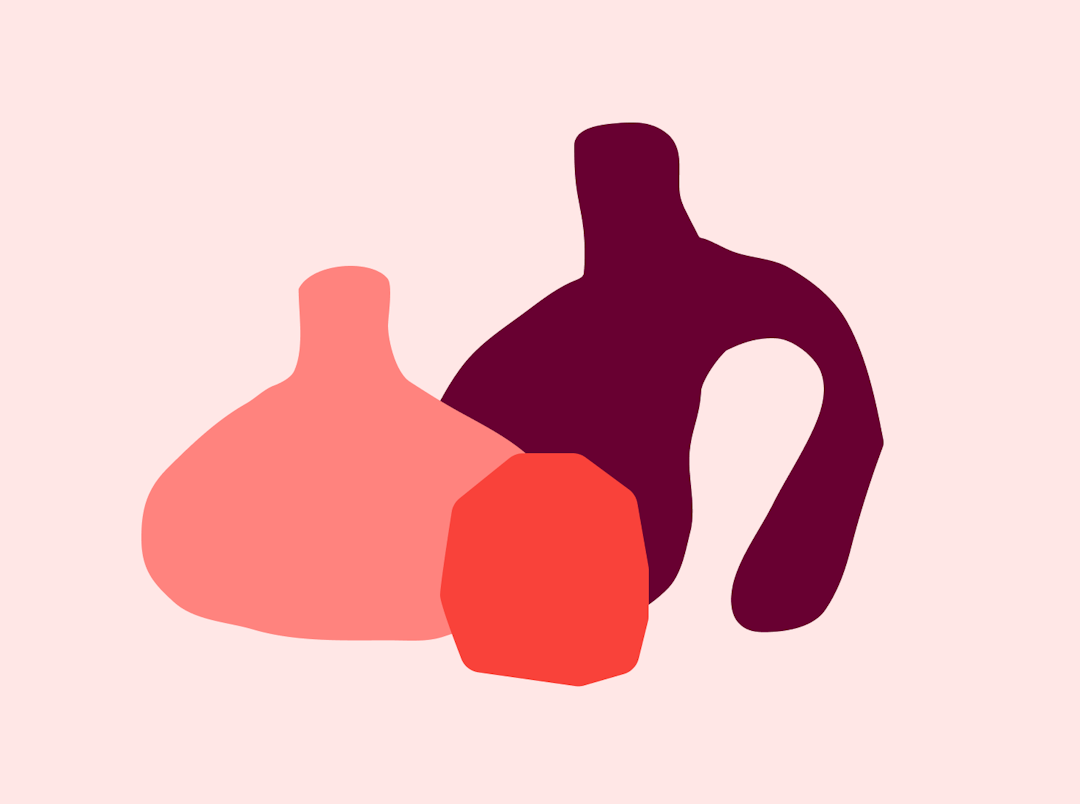#health
Understanding The Differences Between Perimenopause and Menopause
health
·5 min read

by Team Thinx | 12/24/2023
Perimenopause and menopause are often misunderstood. This guide is here to help you navigate the details of perimenopause and menopause, explaining the symptoms, differences and other facts about these transitions. Understanding these changes empowers you on your journey, and we're here to provide clarity every step of the way.
what is perimenopause?
Perimenopause is a pivotal phase in a person’s life. It signifies the transition when the body gears up for the conclusion or end of the menstrual cycle. Think of it as the introduction to a new chapter, indicating the closure of one era and the commencement of another. This preparatory period is essential, and it brings about changes that lay the foundation for the next stage in a person’s reproductive journey.
It's not a separate entity but a seamless continuation, setting the stage for what follows. This brief yet significant span is the body's way of orchestrating the natural progression toward menopause. Below are 6 common symptoms to expect during perimenopause:
1. irregular menstrual cycles
The initial sign of perimenopause is the change in your menstrual cycle. What used to be a regular visitor now follows a more unpredictable pattern. Your monthly schedule takes a turn, becoming less reliable, signaling the onset of perimenopause.
2. hot flashes and night sweats
Picture this sudden wave of heat during perimenopause, almost like a mini-heatwave hitting you. This can lead to tossing and turning in the middle of the night or waking up feeling damp.
3. mood swings
During perimenopause, your emotions may become more unpredictable. You might find yourself experiencing mood swings, going from moments of joy to sudden bouts of irritability. Navigating through these changes can feel like managing unexpected shifts in your emotional landscape.
4. hormonal rollercoaster
During perimenopause, your hormones decide to take you on a rollercoaster ride. Estrogen levels go up and down, creating hormonal imbalances that show up in various symptoms. It's your body's way of adjusting to the changes, and this hormonal rollercoaster becomes a part of your daily life, bringing both expected and unexpected twists in the journey.
5. abnormal bleeding
In perimenopause, you might notice changes in your menstrual bleeding patterns. Abnormal bleeding can include heavier flows, irregular intervals, or spotting between periods. It's comparable to your body trying to communicate in a new language, making the familiar rhythms of your menstrual cycle feel a bit unpredictable.
6. increased urinary urgency
Perimenopause can bring about changes in urinary patterns. It's as though your bladder has become a bit more vocal, causing you to need to find a restroom more urgently. The increased urge to urinate can be accompanied by a sense of urgency that might feel unfamiliar. Bathroom breaks become a more frequent part of your daily routine. If you're navigating perimenopause and finding yourself dealing with leaks, Thinx for All Leaks is here for you. Our range of absorbent bladder leak underwear is designed to offer discreet comfort and protection, supporting you through every step of this transformative journey.
what is menopause?
Menopause signifies the conclusion of a woman's reproductive years, marked by the absence of menstruation for 12 consecutive months. It's like reaching the final chapter of a book, bringing closure to the regularity of monthly cycles. During this phase, the body adjusts to a new normal, embracing a life without the rhythm of periods. Menopause isn't an abrupt event but a gradual shift, like the last chapter in a book, concluding the narrative of fertility.
Now, let's dive into what menopause entails, understanding the adjustments and transformations that accompany bidding farewell to the monthly cycle routine. Here are some menopause symptoms to be mindful of:
hot flashes persist
It can be common for hot flashes that start during perimenopause to stick around. It feels like your body's thermostat got stuck on high, causing sudden waves of heat. This lingering warmth can interrupt your daily routine, making you wonder when the heat will subside and your body will find a new normal.
vaginal dryness
With menopause, estrogen, the guardian of vaginal health, takes a step back. This shift can lead to dryness, a sensation akin to a once lush garden needing a bit more care to flourish. It's like your body's way of adjusting to a new environment, where moisture becomes a precious resource, and providing extra care becomes crucial for comfort.
mood swings redux
The hormonal rollercoaster that started in perimenopause doesn't screech to a halt after menopause. Mood swings may persist, making navigating emotions a continued challenge. It's like riding waves of emotion that don't necessarily follow a predictable pattern, requiring ongoing adaptability in managing these fluctuations in mood.
sleep disturbance
Menopause can bring about changes in your sleep patterns. Sleep disturbances become more common during this phase, leaving you tossing and turning. It's similar to navigating a night without a clear roadmap, where each attempt to embrace sleep becomes a bit more elusive.
joint pain and muscle aches
Menopause can sometimes bring an unwelcome companion — joint pain and muscle aches. It feels like your body is reminding you of the years gone by. Moving might become a bit creakier, and activities that once felt effortless might now prompt a few extra groans. It's a natural part of the aging process, where your body adapts to the changes over time.
what is the difference between perimenopause and menopause?
Understanding the differences between perimenopause and menopause is important for navigating the various phases of a person's reproductive journey. While both are integral components of this natural process, they each have distinctive features that warrant exploration. Let's dissect these dissimilarities to shed light on the nuanced transitions from perimenopause to menopause.
duration
Wondering what age perimenopause starts and how long perimenopause lasts? It varies, but understanding that it's a prolonged period that can potentially extend over several years provides a valuable perspective. It's a prolonged period where the body undergoes preparatory changes before the official onset of menopause. In contrast, menopause takes center stage when a person experiences 12 consecutive months without a menstrual period. It's a more defined phase, marking the definitive end of reproductive years.
symptom intensity
The intensity of symptoms like hot flashes and mood swings can vary between perimenopause and menopause. During perimenopause, these symptoms may be more pronounced, creating a rollercoaster-like experience. As menopause unfolds, the intensity may diminish, offering a sense of relief from the heightened symptoms that characterized the earlier phase.
menstrual changes
Perimenopause introduces irregular menstrual cycles, disrupting the once-predictable pattern. It's like a subtle shift in the familiar rhythm, indicating the body's transition. On the other hand, menopause signifies the ending of menstruation altogether, concluding the monthly cycles and ushering in a new phase where periods are no longer part of the reproductive landscape.
hormonal variations
Hormonal fluctuations, especially in estrogen levels, play a prominent role in both perimenopause and menopause. During perimenopause, these levels go through more significant ups and downs, contributing to the rollercoaster of symptoms. As menopause arrives, hormonal levels stabilize to lower levels, creating a new hormonal baseline that characterizes this post-reproductive phase.
onset of symptoms
Perimenopause introduces symptoms gradually, allowing the body to adapt to the changing hormonal landscape. It's like a slow unveiling of changes, providing time for adjustment. On the other hand, menopause brings a more definitive onset of hormonal changes, marking a distinct shift in the body's reproductive functions. The symptoms that emerge during menopause become more apparent and define this stage of the reproductive journey.
why does perimenopause happen?
Diving into the reasons behind perimenopause is essential to grasp the intricacies of this natural phase in the reproductive journey. From the internal adjustments accompanying the natural aging process to the influence of genetic factors and the evolutionary design of our reproductive systems, understanding why perimenopause happens sheds light on the profound changes occurring within the body.
natural aging process
Perimenopause is a result of the natural aging process, extending beyond the visible signs of wrinkles to encompass internal adjustments. As the body gracefully ages, hormonal shifts occur, marking the onset of perimenopause. It's a subtle but significant transformation, a testament to the body's continuous adaptation to the passage of time.
genetic factors
Thank your genes for their role in perimenopause. If your mother experienced an early onset of perimenopause, chances are you might embark on the same hormonal journey. Genetic factors contribute to the timing and characteristics of perimenopause, highlighting the interconnectedness of family history and the reproductive trajectory.
embracing transformative journeys
Perimenopause and menopause unfold not just as biological processes, but as transformative journeys. Beyond the physical changes, these phases bring emotional shifts and personal growth. Empowering individuals with knowledge about when perimenopause begins, how long it lasts, and the distinctions from menopause is crucial for navigating through the changes with confidence.
As you embark on this adventure, remember that Thinx is here to offer comfort and support through all of life's leaks, acknowledging the uniqueness of each individual's experience. Whether you're embracing the changes, celebrating milestones, or seeking a community that understands, we are here to be part of your journey.
sources
Cleveland Clinic. Perimenopause: Age, Stages, Signs, Symptoms & Treatment. www.my.clevelandclinic.org/health/diseases/21608-perimenopause
Scripps Health. Perimenopause vs Menopause. www.scripps.org/news_items/6457-how-to-tell-the-difference-between-perimenopause-and-menopause
Healthline Media. Premenopause, Perimenopause, and Menopause. www.healthline.com/health/menopause/difference-perimenopause
by Team Thinx


